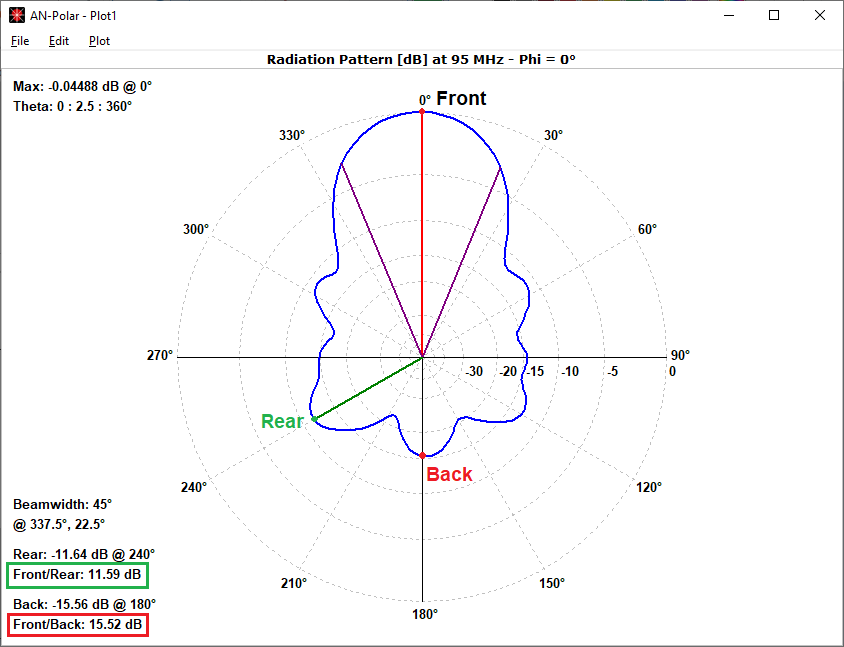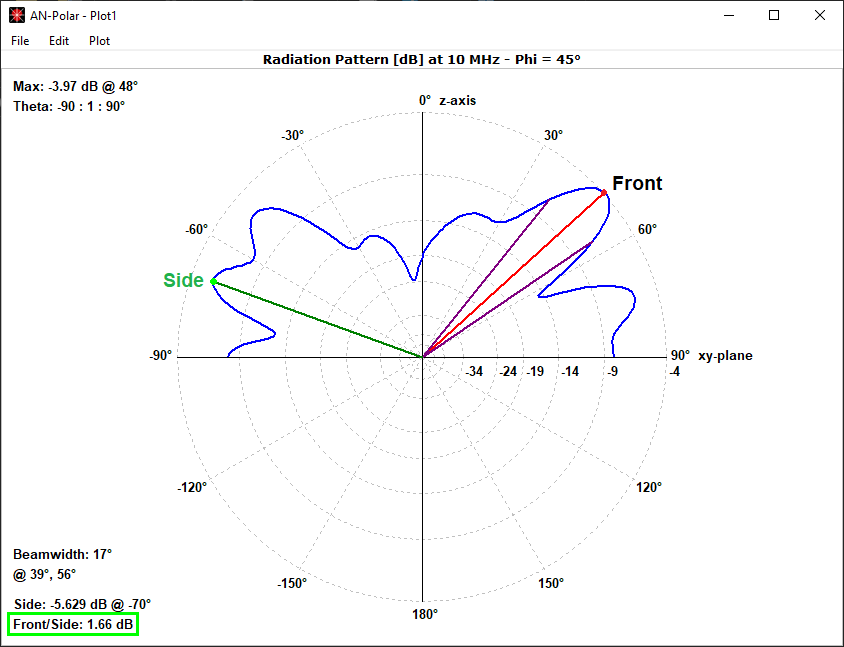Search for answers or browse our Knowledge Base.
Guides | Models | Validation | Blog
Front-to-Rear and Front-to-Back Ratios: Applying Key Antenna Directivity Metrics
Two commonly used metrics for quantifying the directional properties of an antenna radiation pattern are the front-to-rear ratio (F/R) and the front-to-back ratio (F/B). Both F/R and F/B are crucial parameters for evaluating antenna performance, especially in applications requiring high directivity and low interference, such as point-to-point communication links and satellite systems.
- F/R is the ratio of the maximum power radiated by the antenna in the forward direction to the maximum power radiated in the backward direction. It indicates the antenna’s directional gain in the forward direction relative to its backward radiation. A high F/R signifies strong forward radiation and low backward radiation.
- F/B is the ratio of the maximum power radiated by the antenna in the forward direction to the power radiated in the opposite direction. It measures the power difference between the front and the directly opposing side of the antenna. A high F/B also implies strong forward radiation and low radiation in the opposite direction.
Both F/R and F/B are typically expressed in decibels (dB).
| Metric | Definition |
|---|---|
| F/R (Worst-case Front-to-Back) | Ratio of maximum forward power to maximum backward power |
| F/B (180°-Front-to-Back) | Ratio of maximum forward power to power at 180 degrees |
Figure 1 illustrates the difference between F/R and F/B, assuming a 360-degree radiation pattern slice.

In summary, the primary distinction between F/R and F/B lies in the direction of backward radiation. F/R compares the maximum forward power to the maximum backward power, while F/B compares the maximum forward power to the power radiated in the opposite direction.
These definitions are applicable to both horizontal (θ = const.) and vertical (φ = const.) radiation patterns in free space. However, the presence of a ground plane introduces complexities. For horizontal patterns, F/R and F/B calculations remain unchanged as the angular range spans 360 degrees. Conversely, for vertical patterns, the angular range is limited to 180 degrees. In this case, F/R is redefined as the front-to-side ratio, comparing the maximum signal to the maximum signal in the opposite quadrant (as depicted in Fig. 2). F/B becomes irrelevant due to the absence of a ‘back’ direction for an infinite ground plane, resulting in a zero value from AN-SOF.

Understanding F/R and F/B is crucial for effective antenna design. The Results tab in the AN-SOF main window presents F/R and F/B values in dB as a function of frequency for both vertical (V) and horizontal (H) radiation pattern slices. The Plots tab offers a visual comparison of F/R and F/B over the frequency range.
Note:
- To ensure proper calculations of F/R and F/B, select the Full 3D, Vertical or Horizontal options in the Far-Field panel.
Golden Engineering
- Selecting the Custom option in the Far-Field panel will lead to variations in the calculation of F/R and F/B as they will depend on the specific angular ranges that have been configured.
